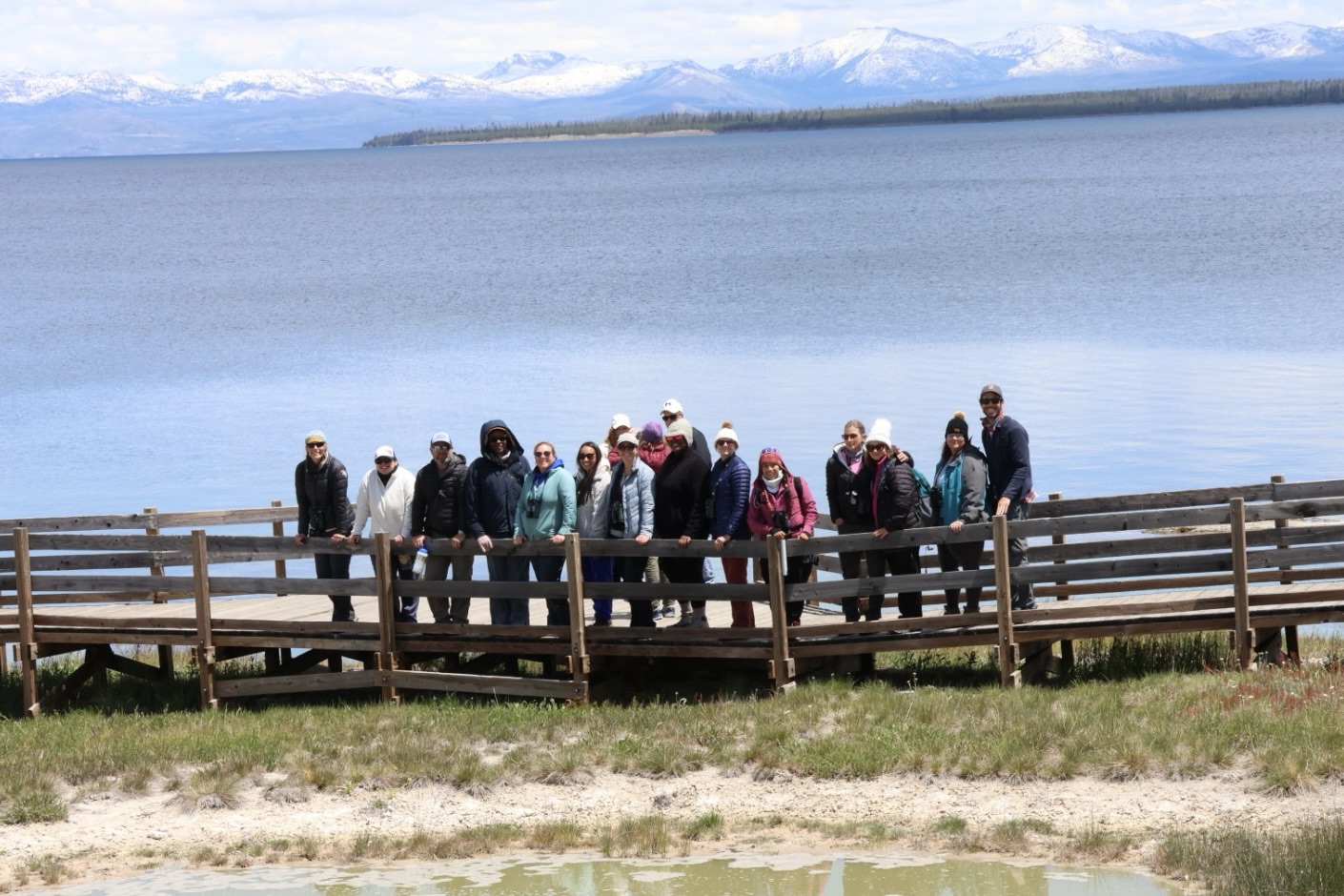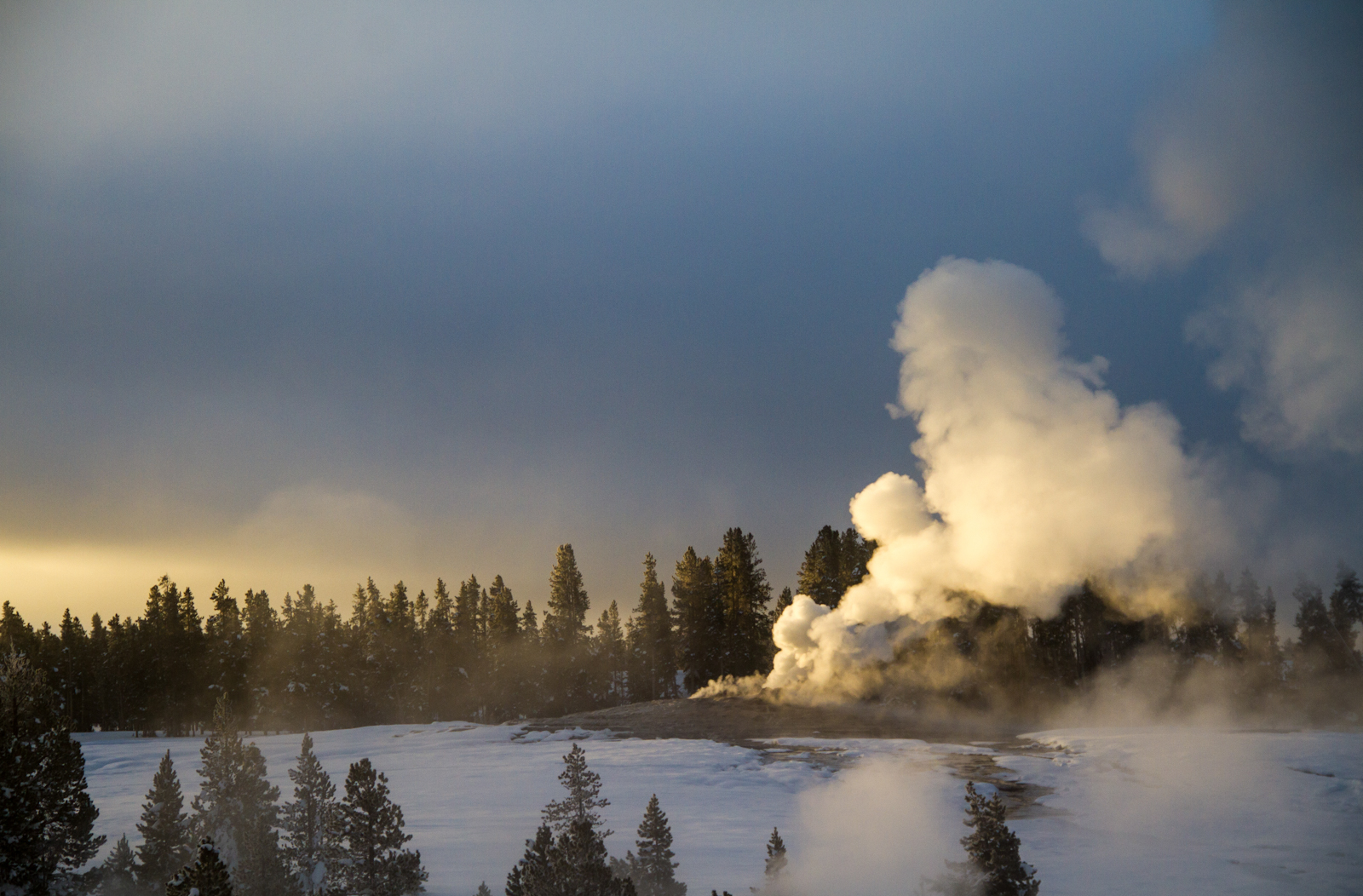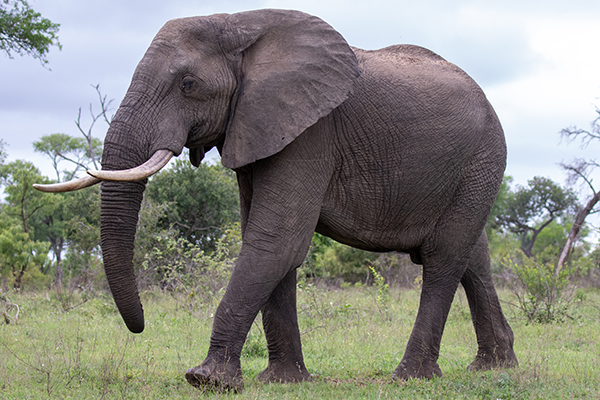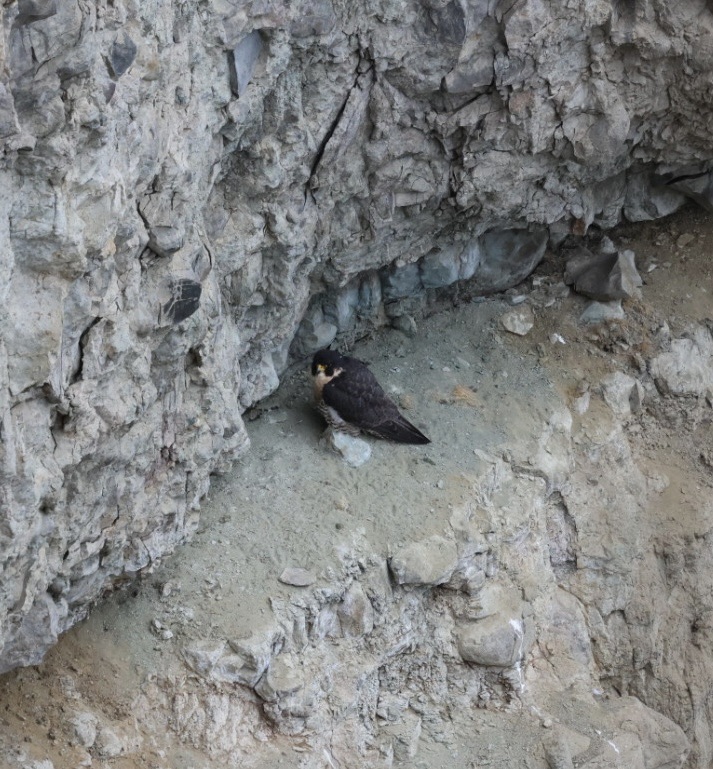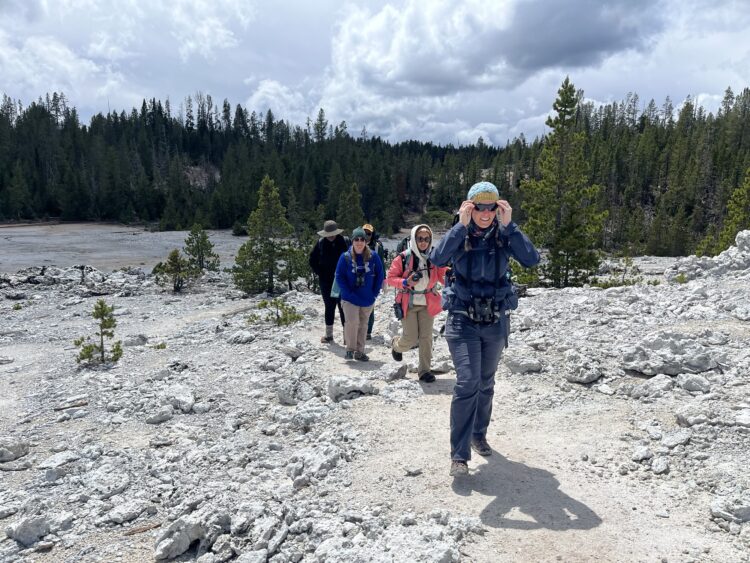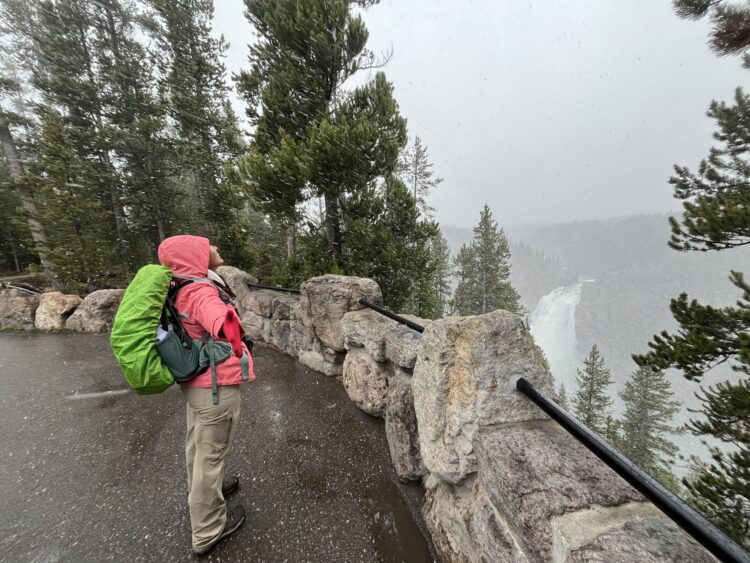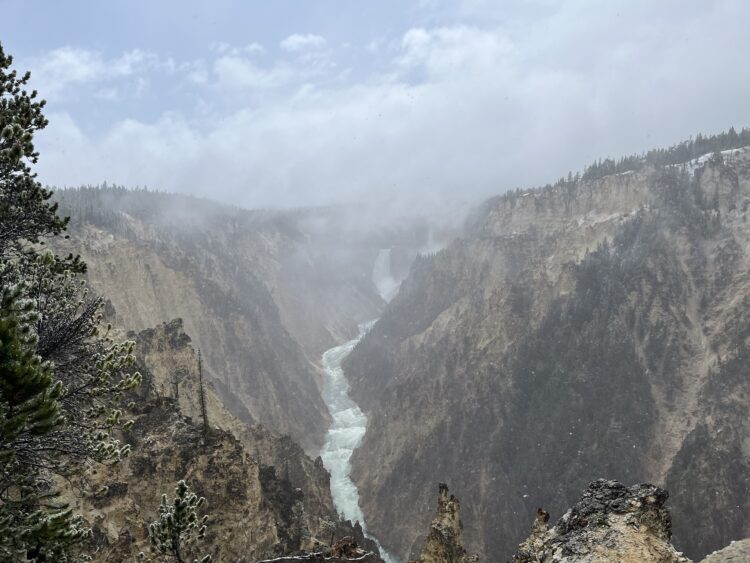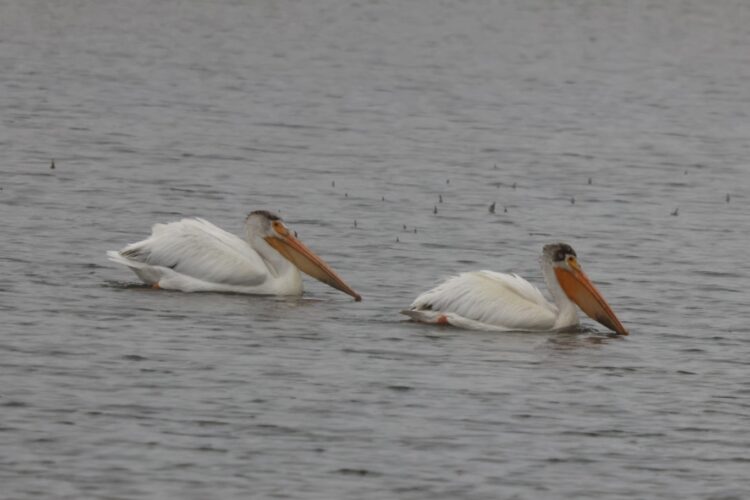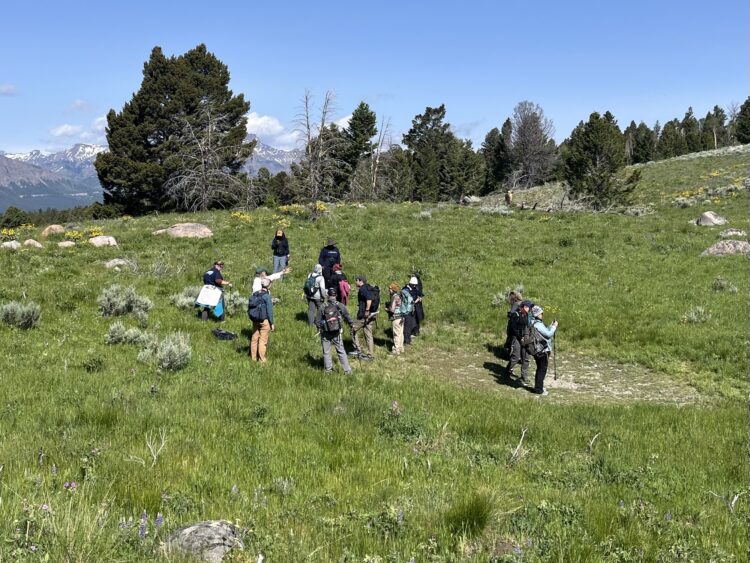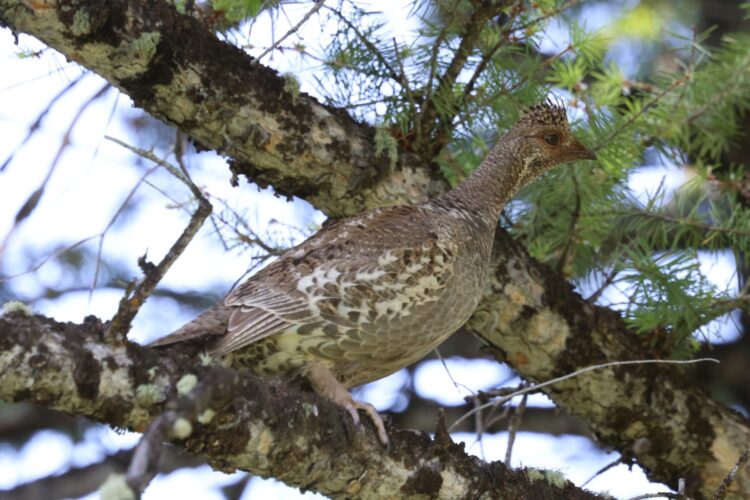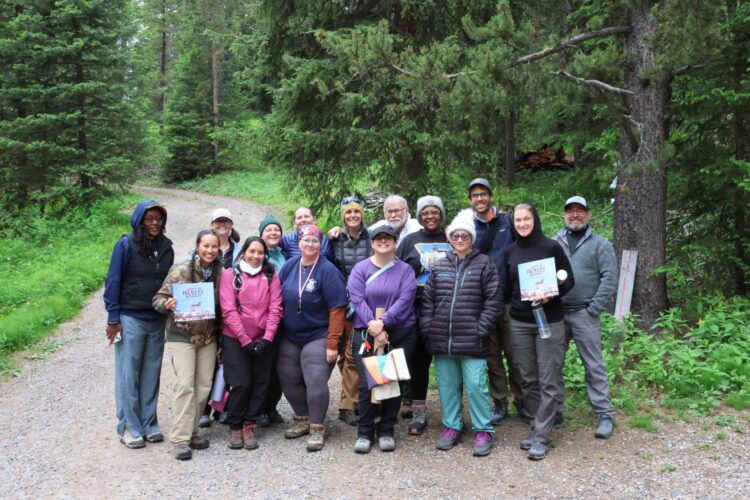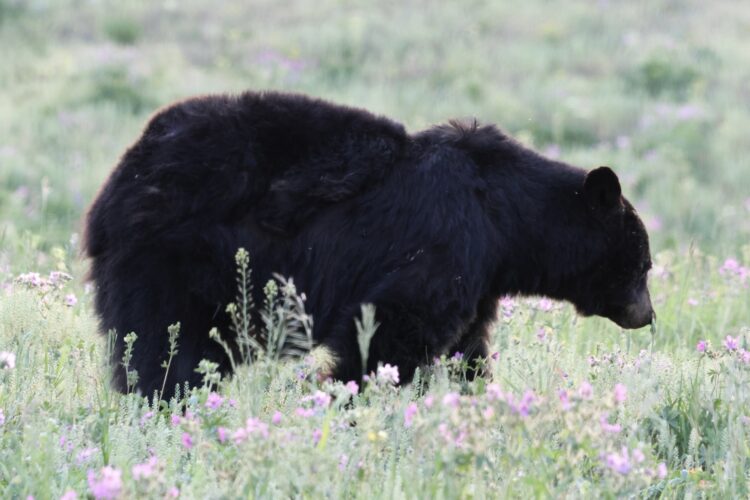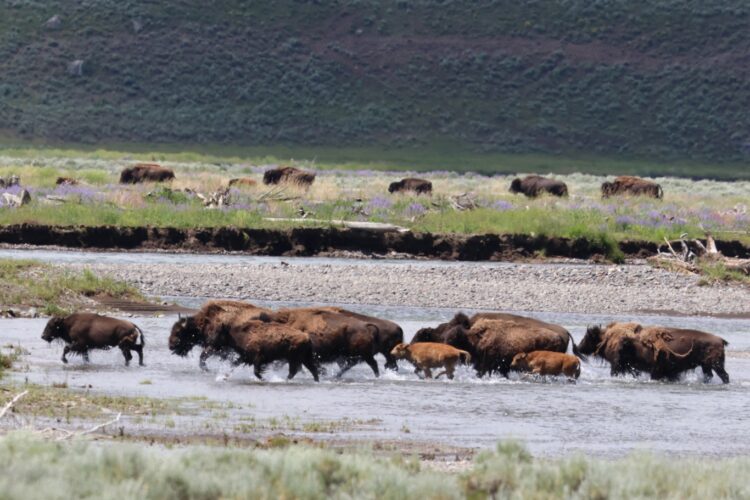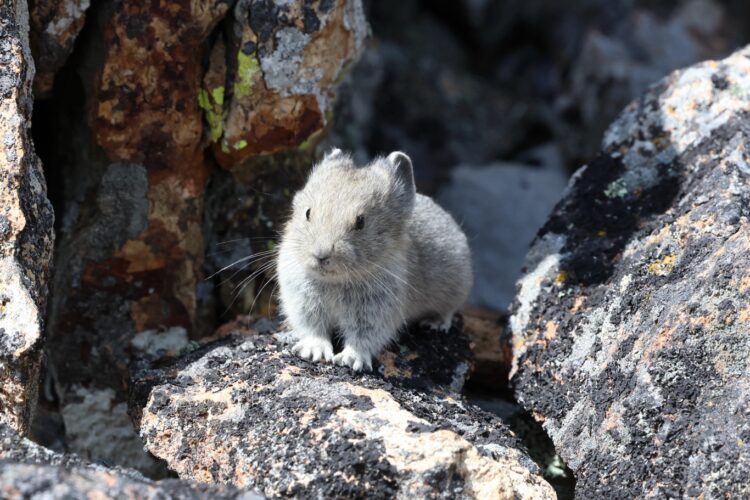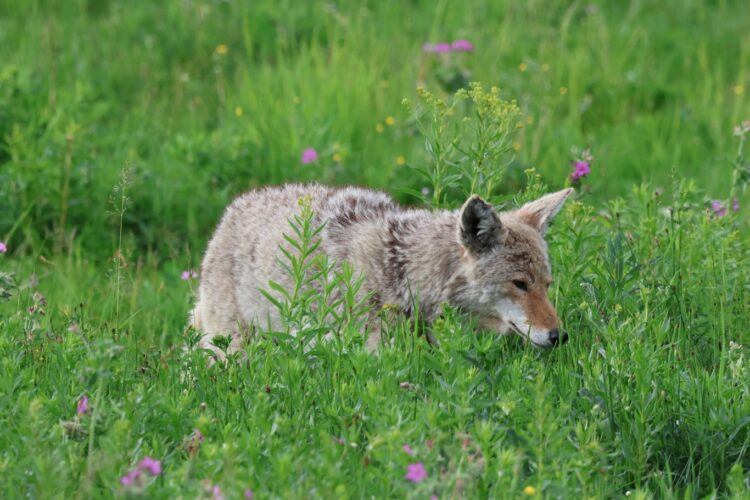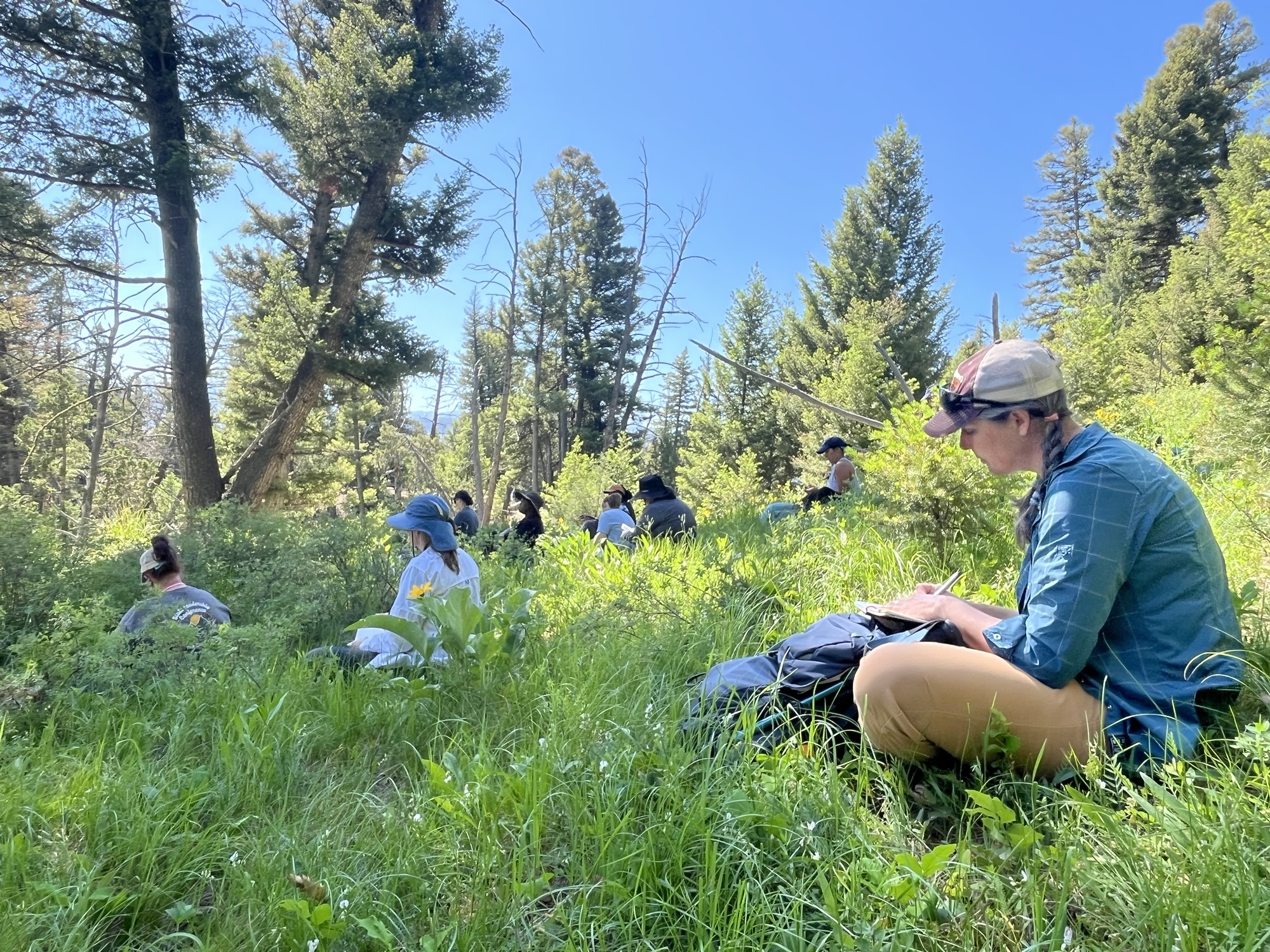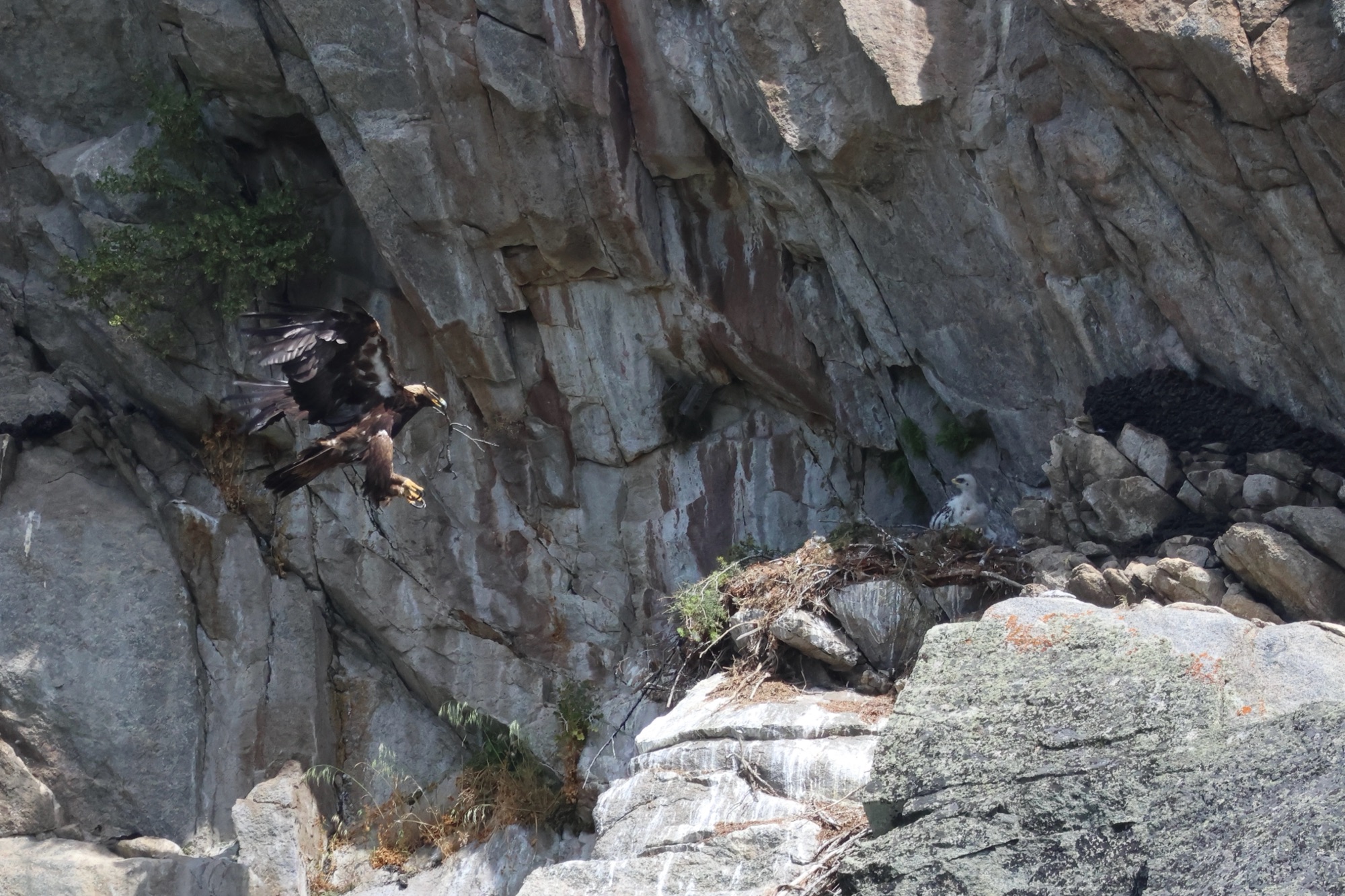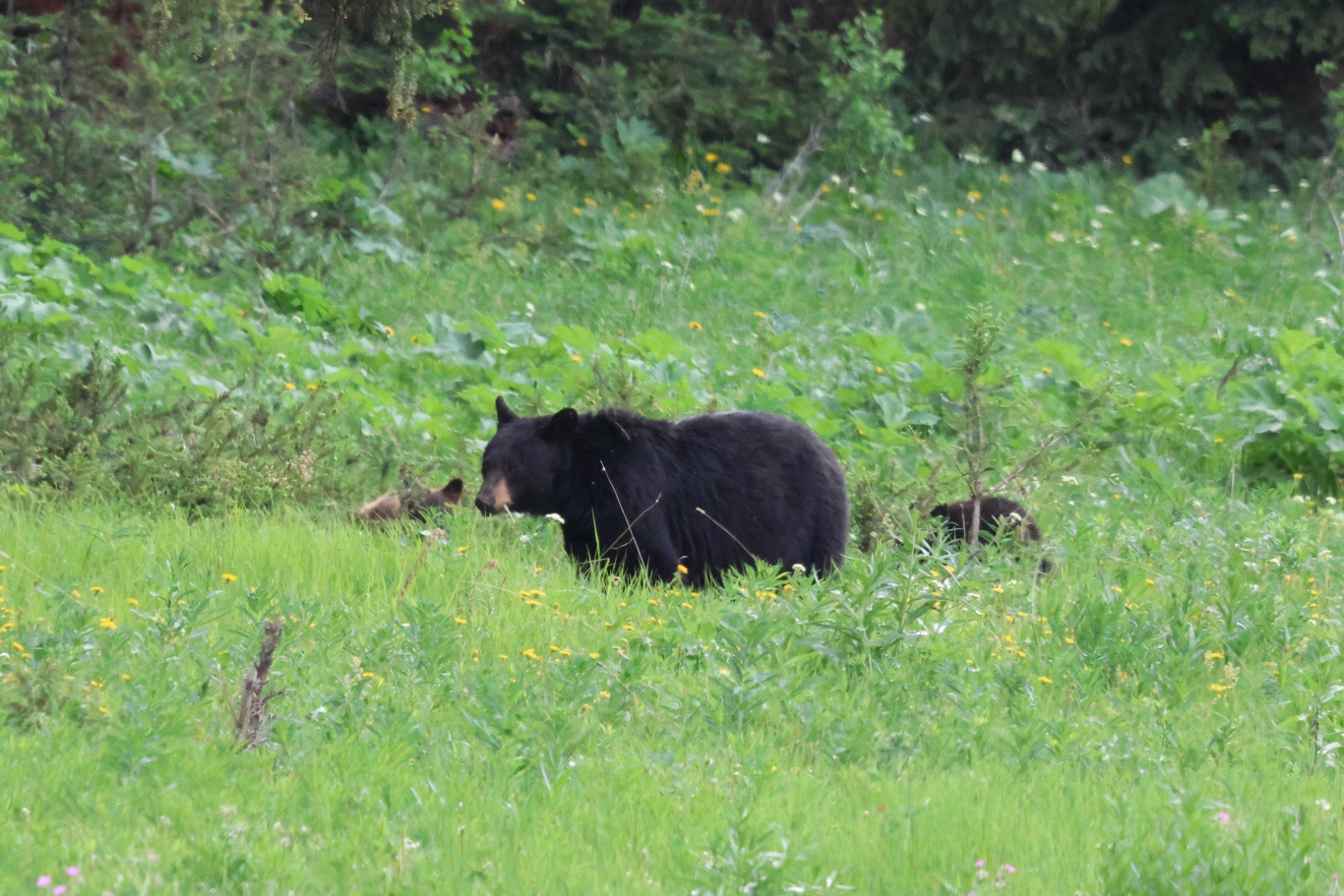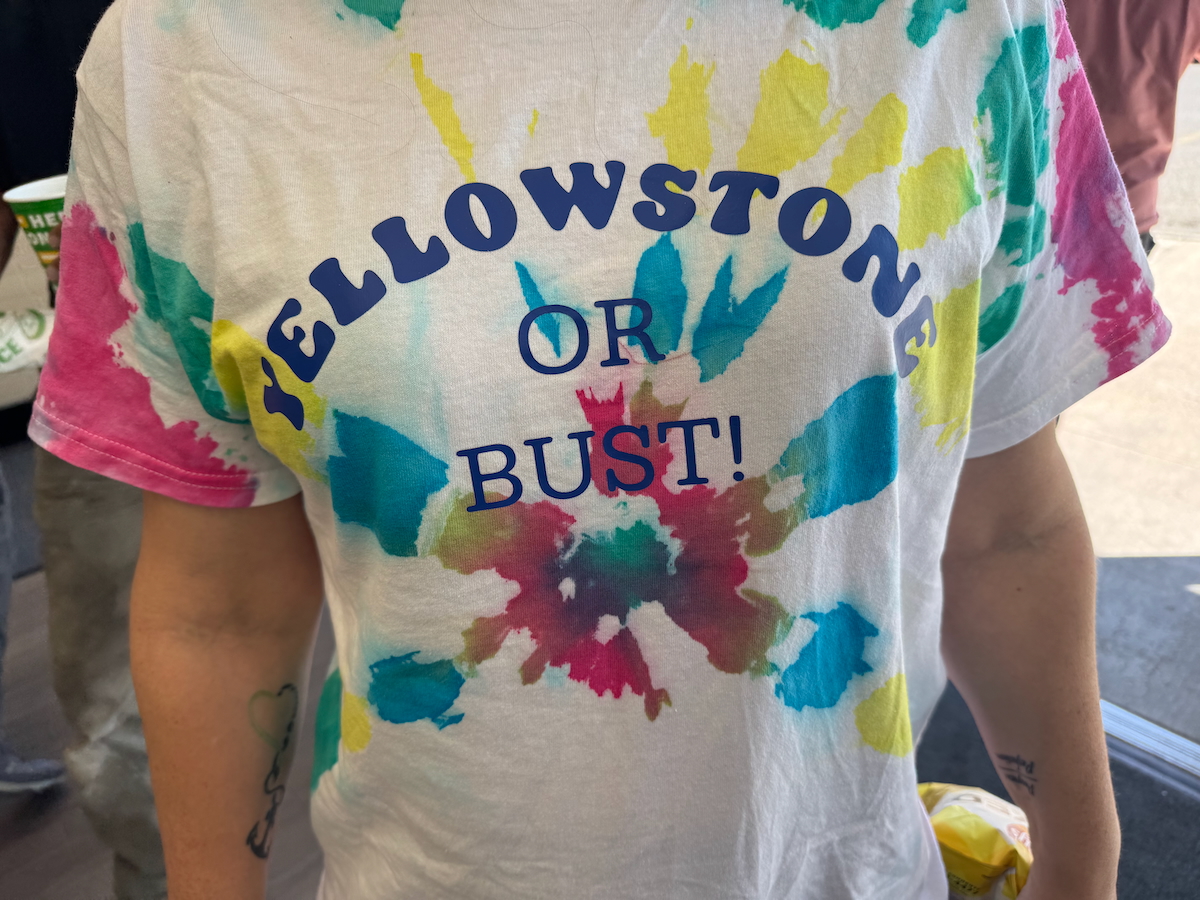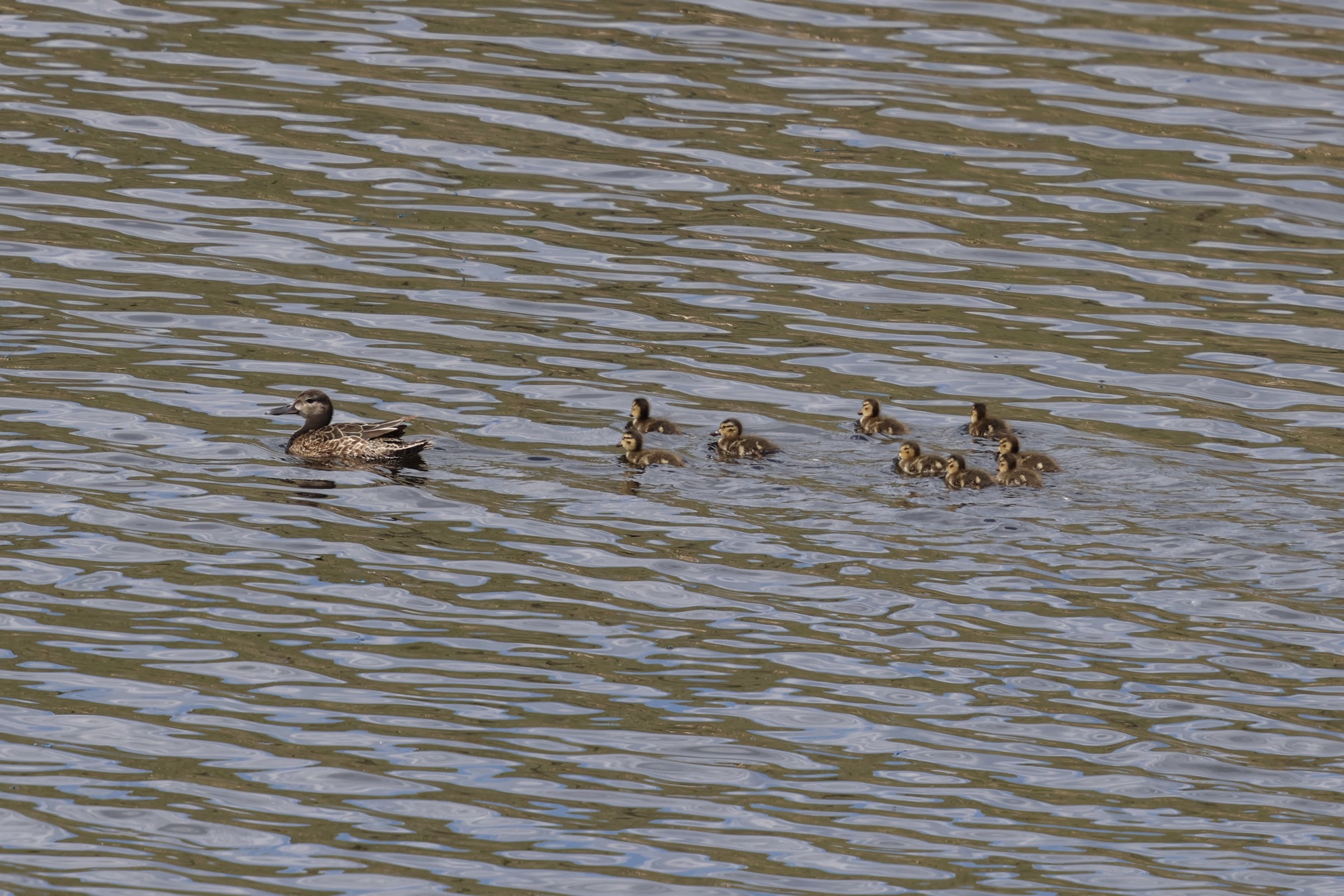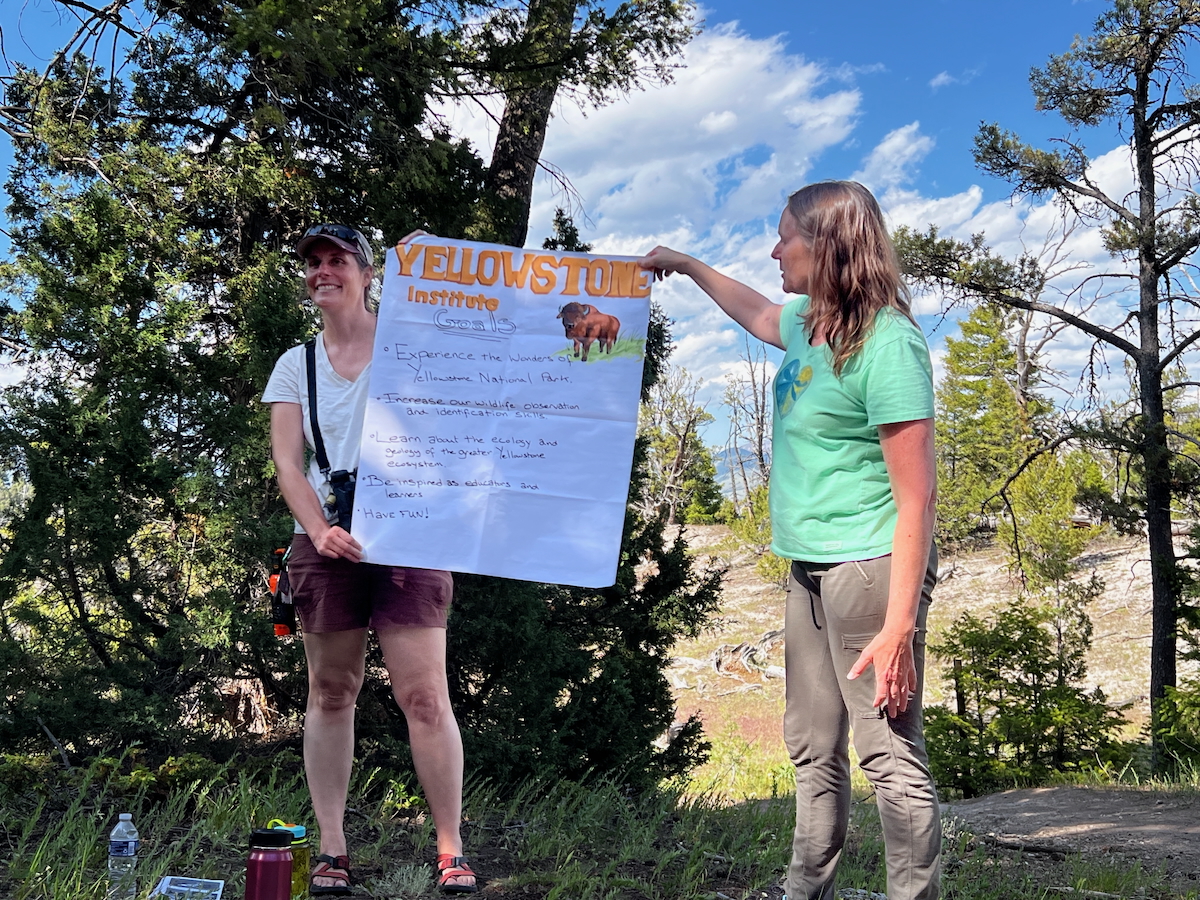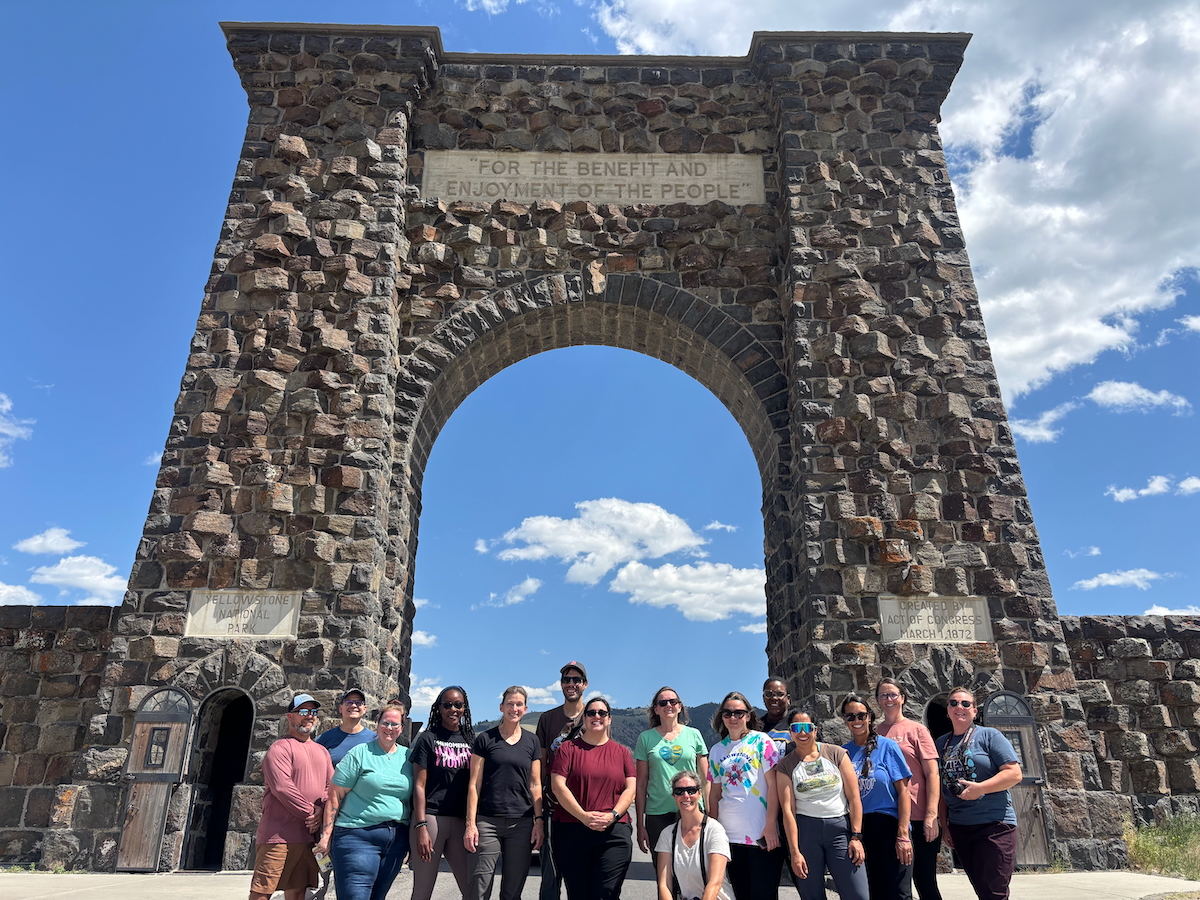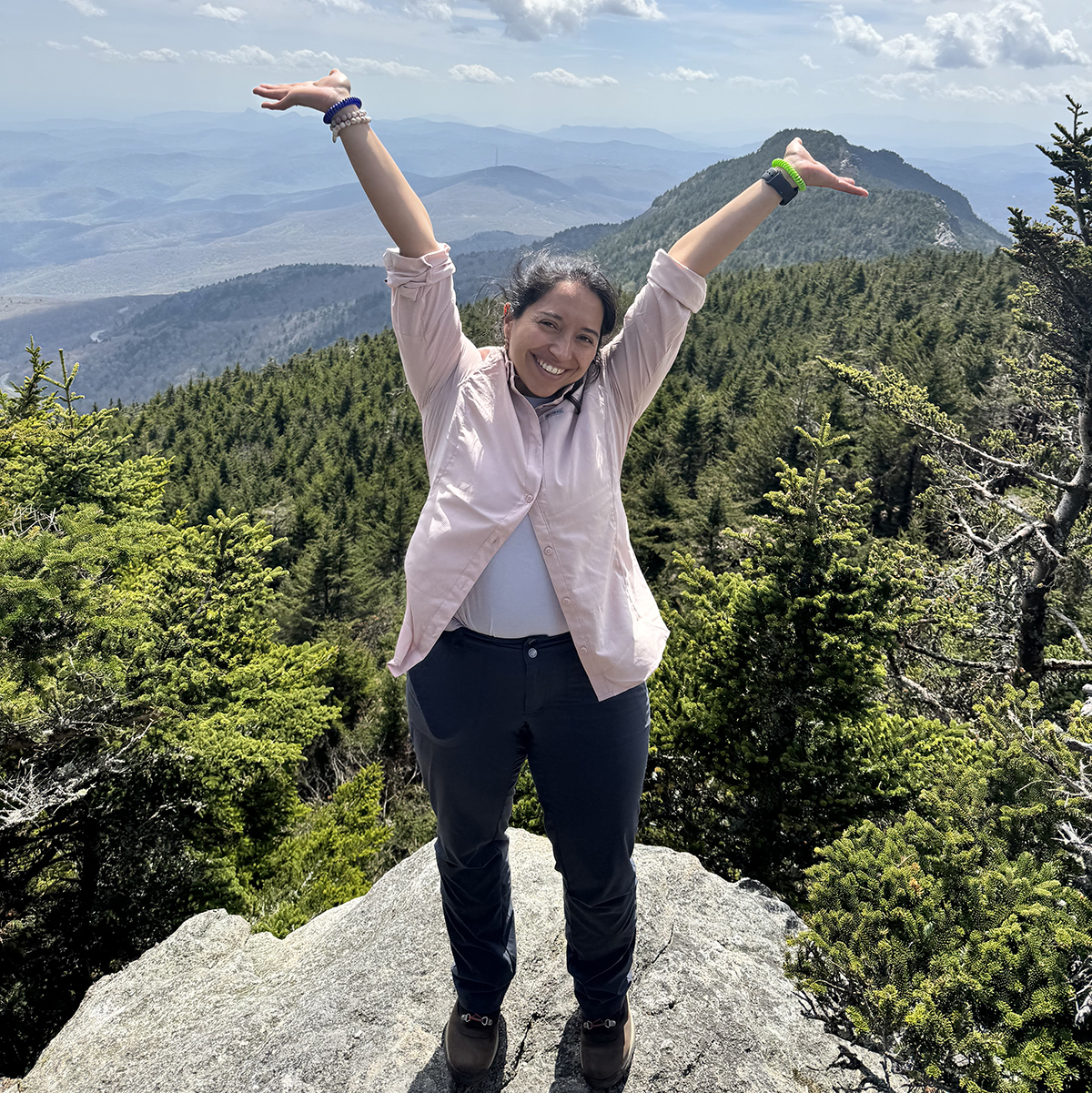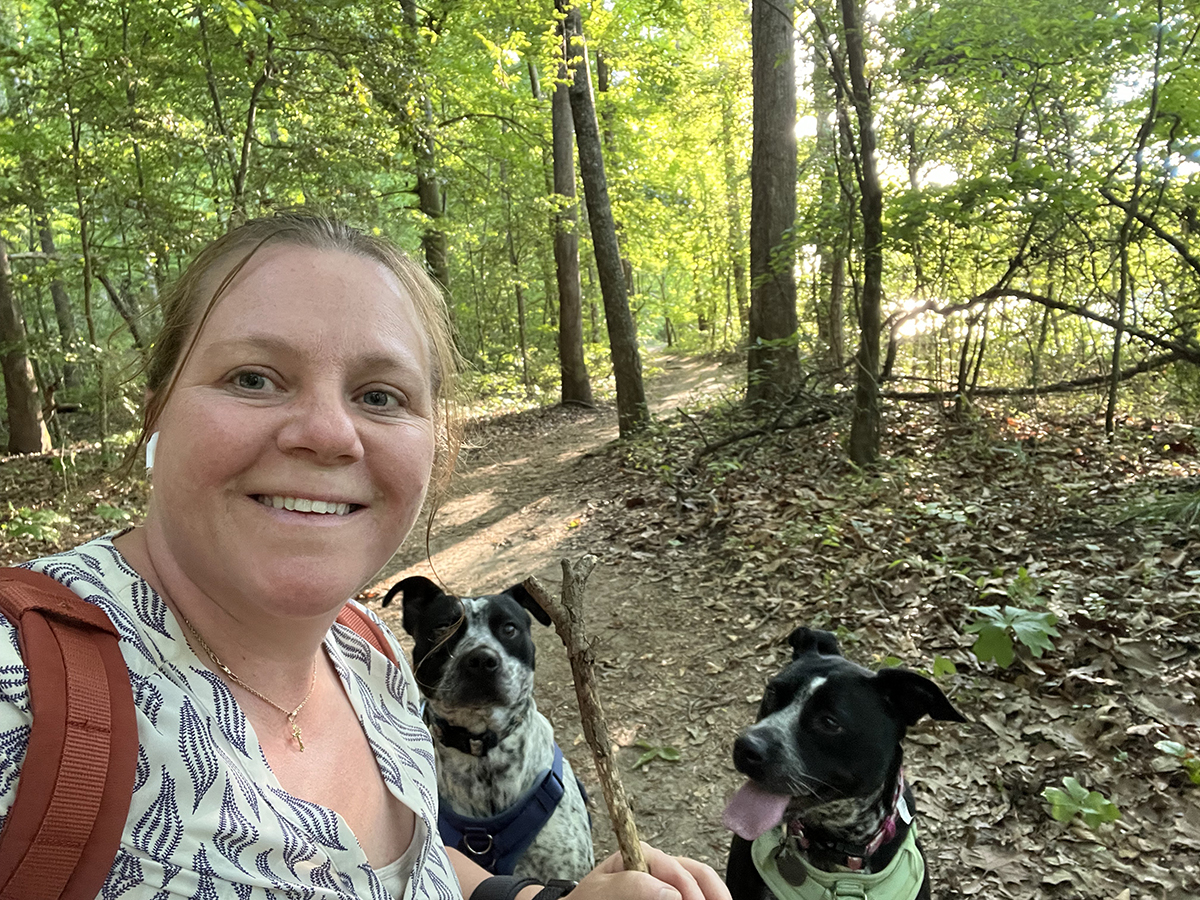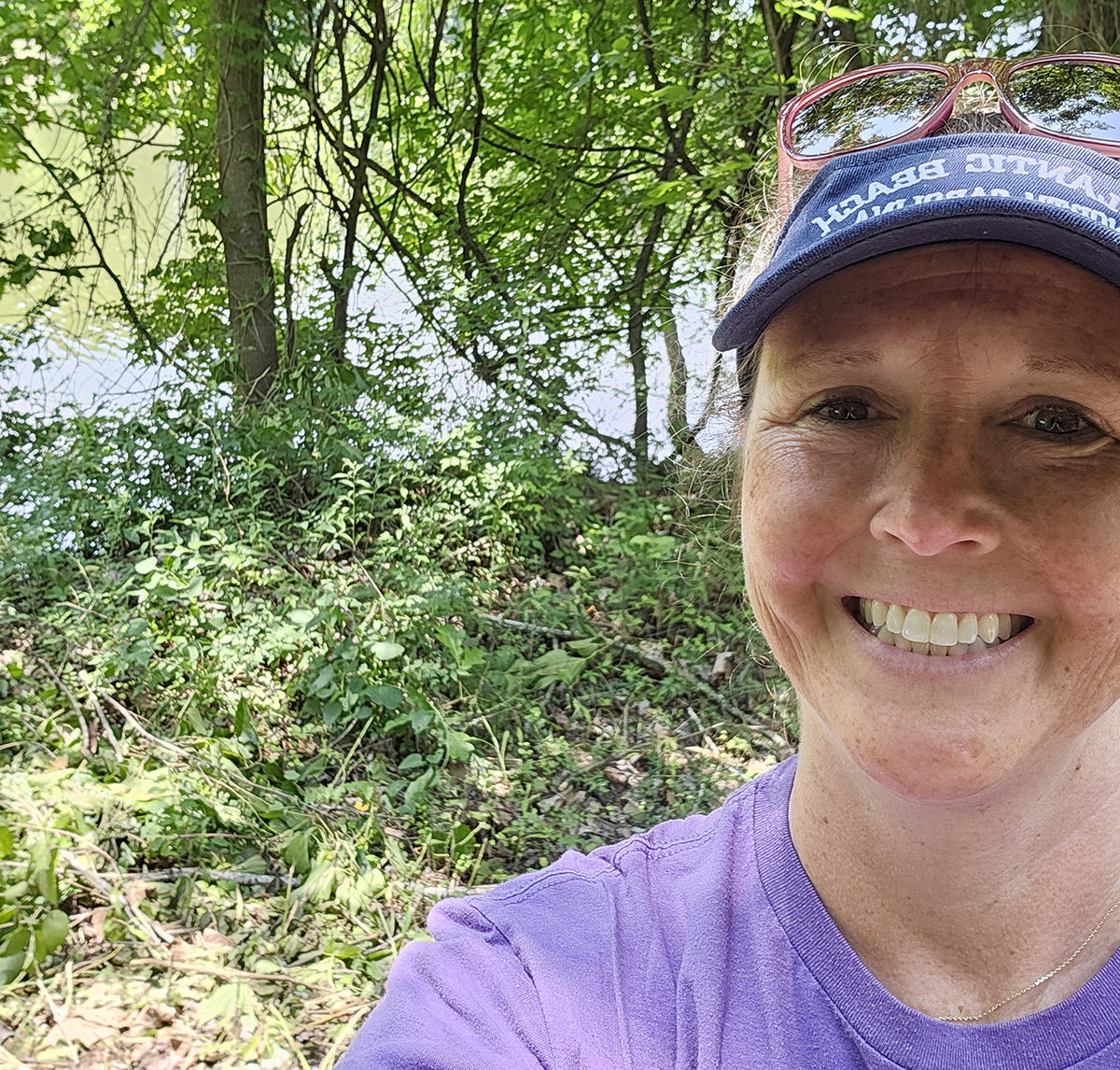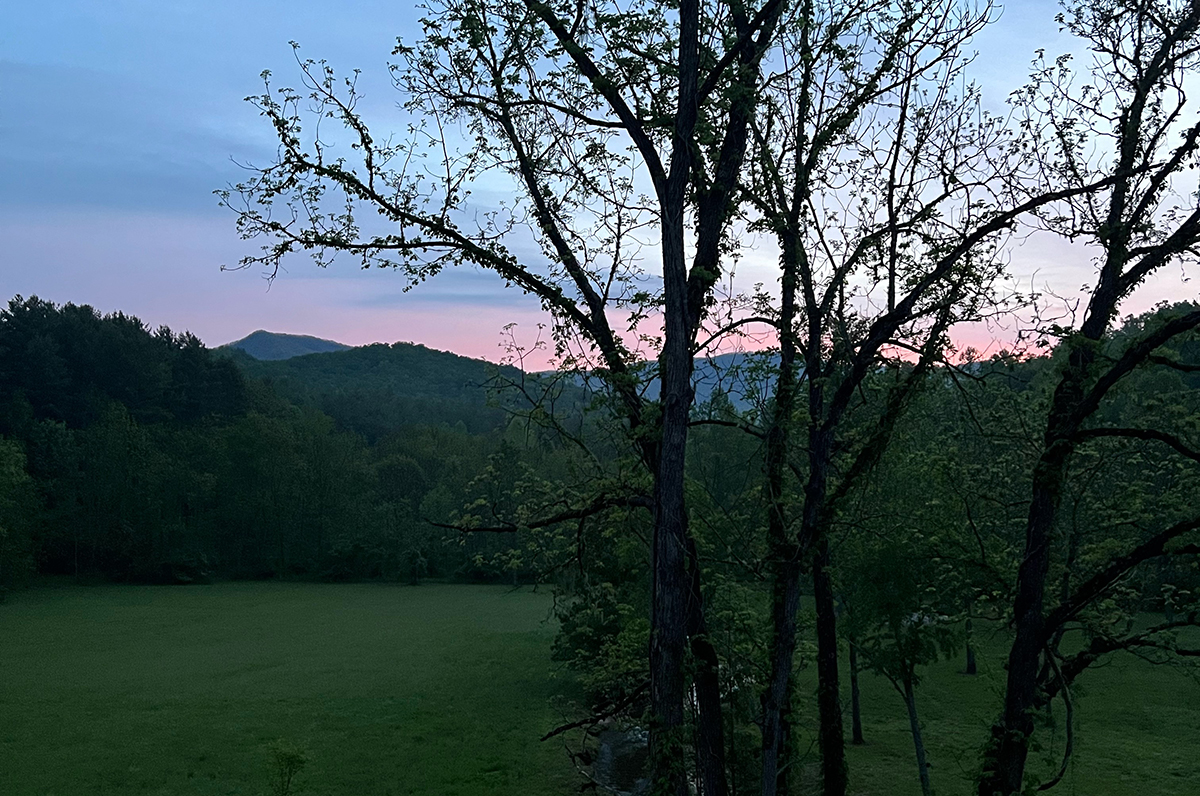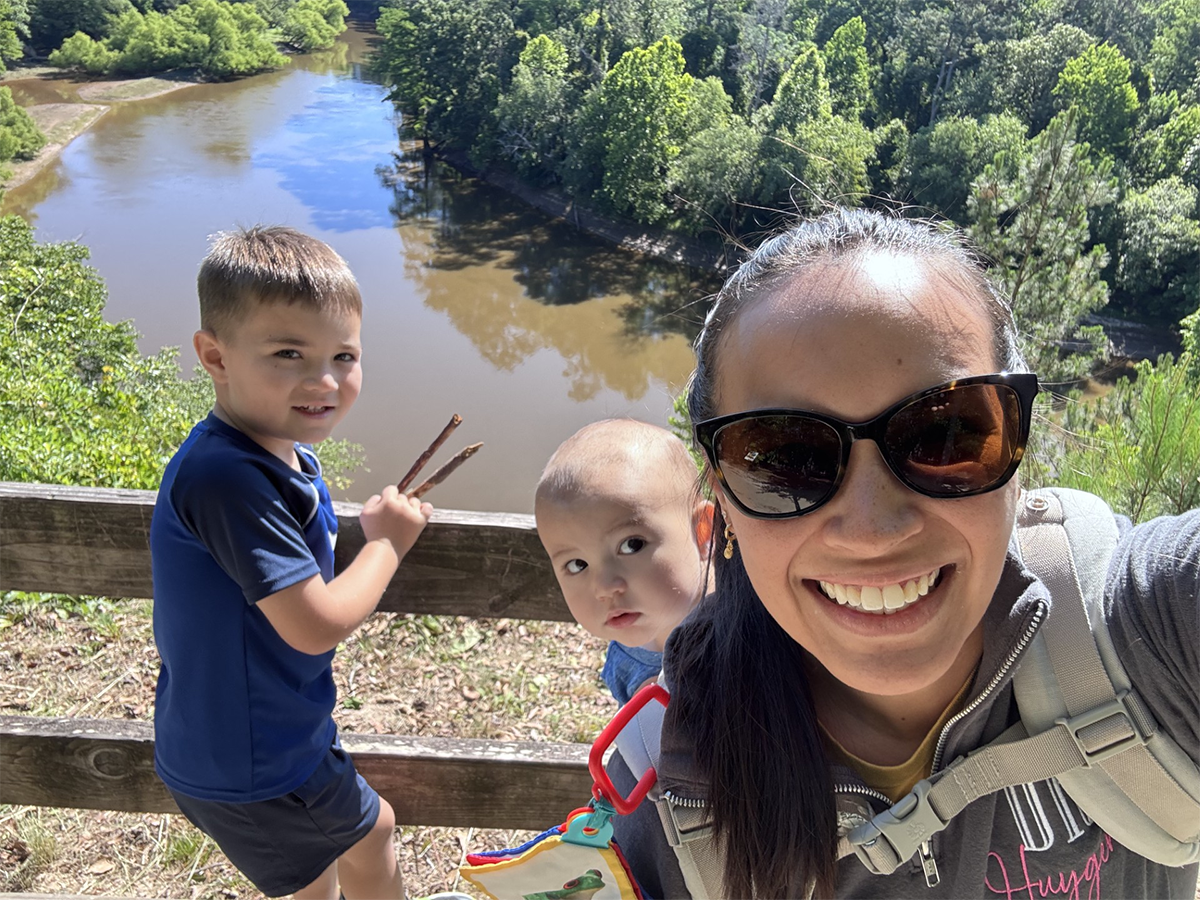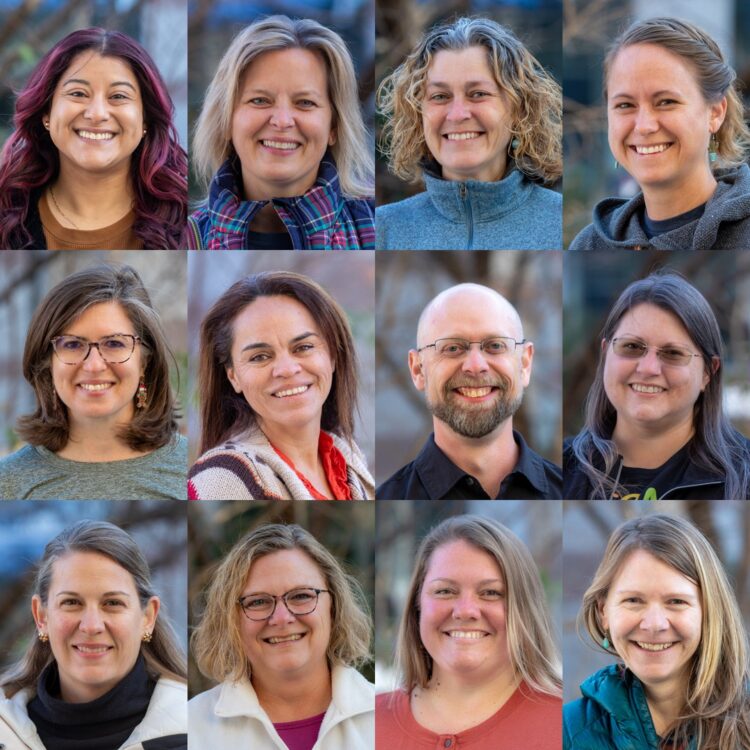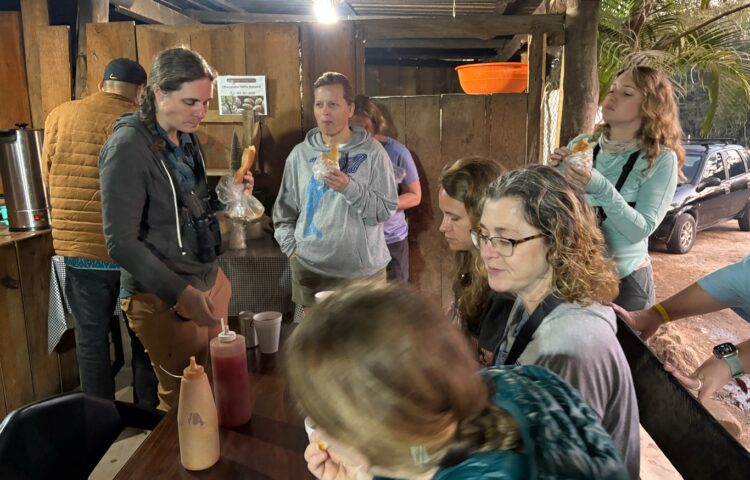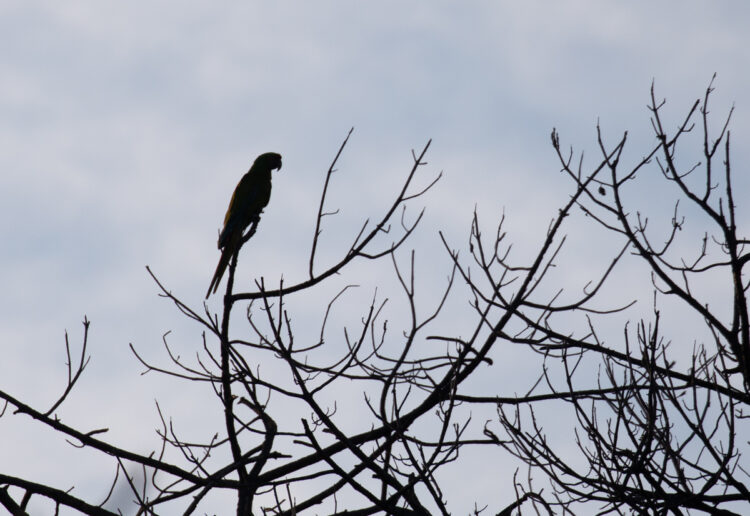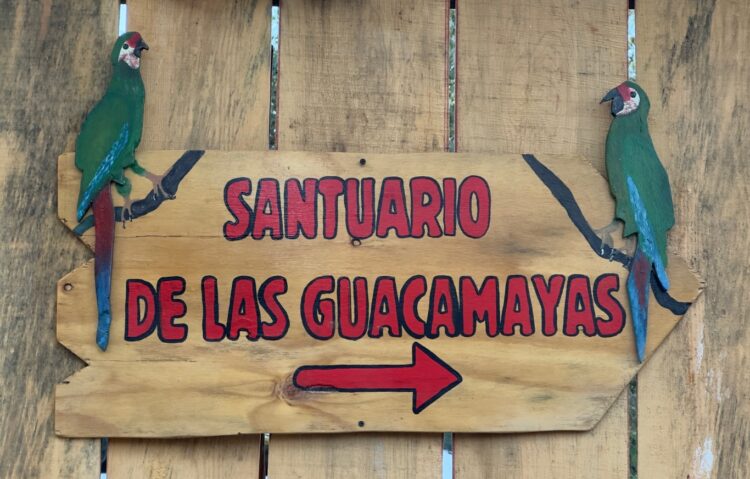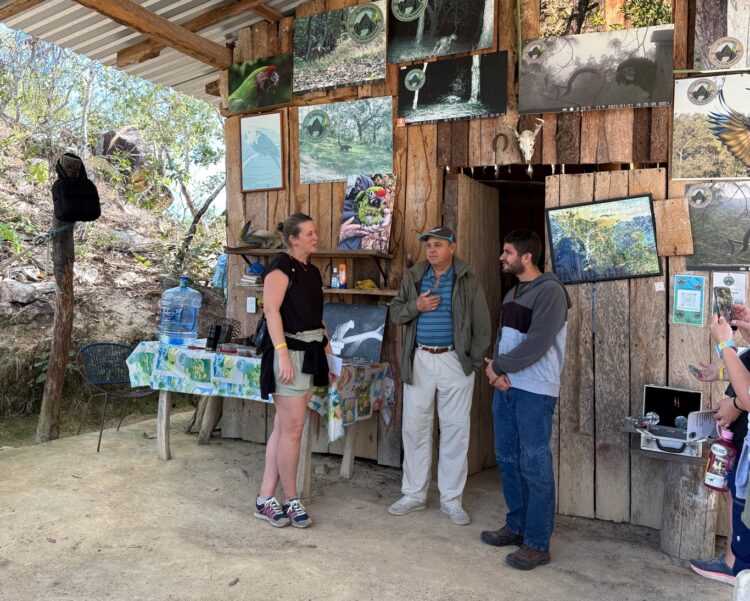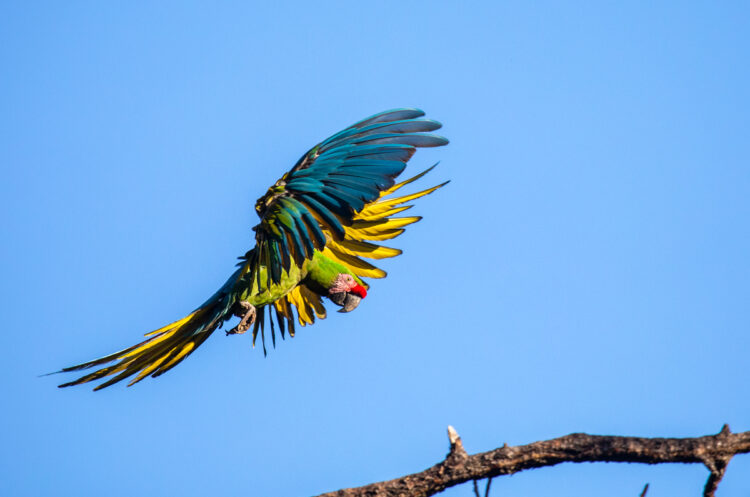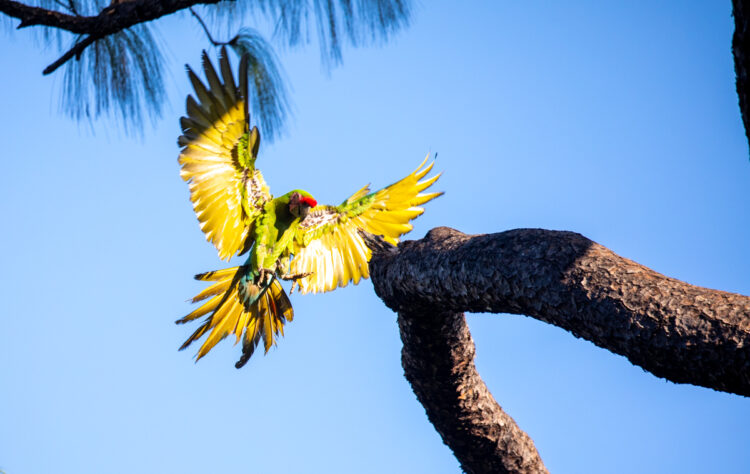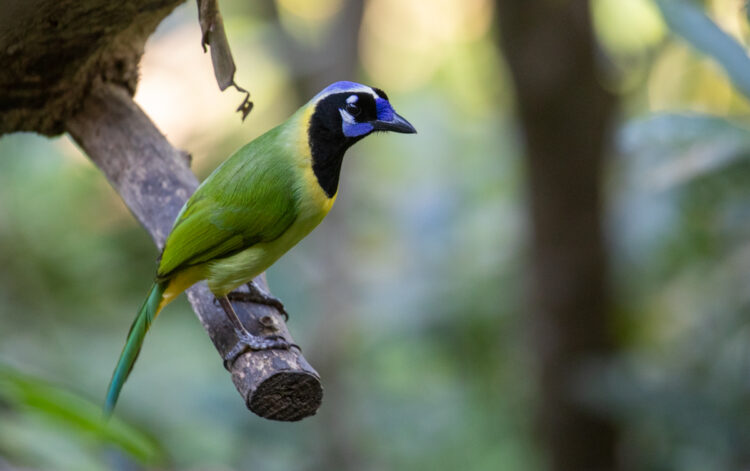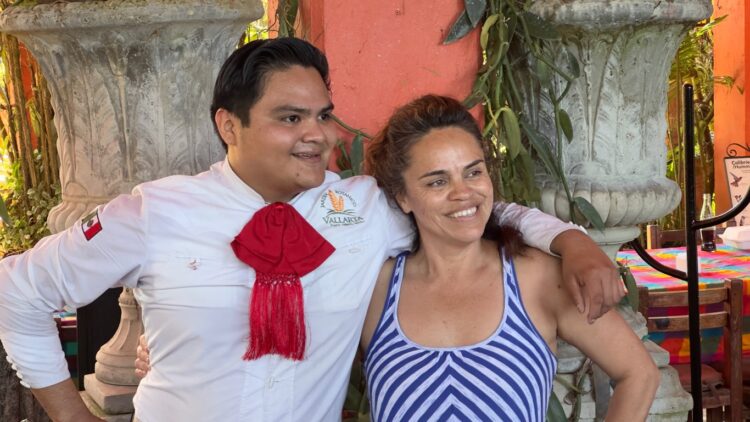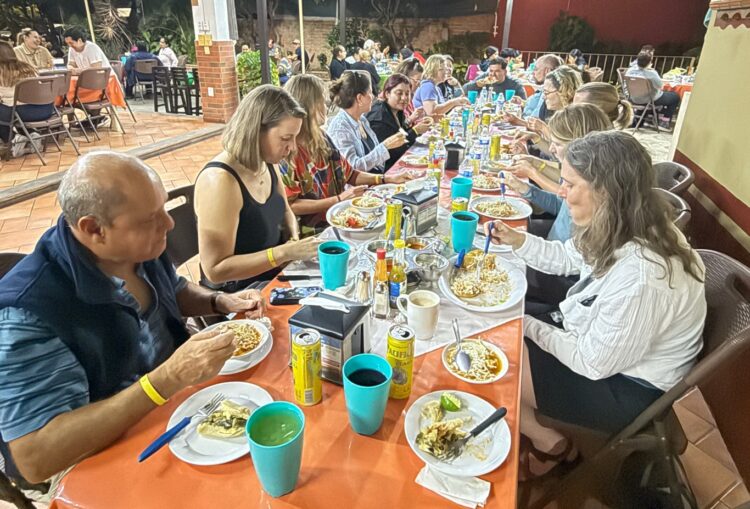“The Ethereal Lake ”
June 25, 2025 - 0 Comments
“One thing I have come to conclude is that the more one travels and actually interacts with the locals, the more open minded and empathetic one becomes. Travel is fatal to prejudice, bigotry, and narrow-mindedness, and many of our people need it sorely on these accounts.” – Mark Twain
The day began with breakfast and a view — a towering peak framed by the morning light. Several of us gathered near the windows, drawn to the quiet majesty beyond the glass. There was something sacred in that moment, something unspoken in the way the mountain stood still. We laughed, we talked, and slowly, layers peeled away. Where once we were strangers, we now sat as friends — woven together by shared stories, experiences and the wonder of where we are. Who would have known this experience would shape us in such a way.
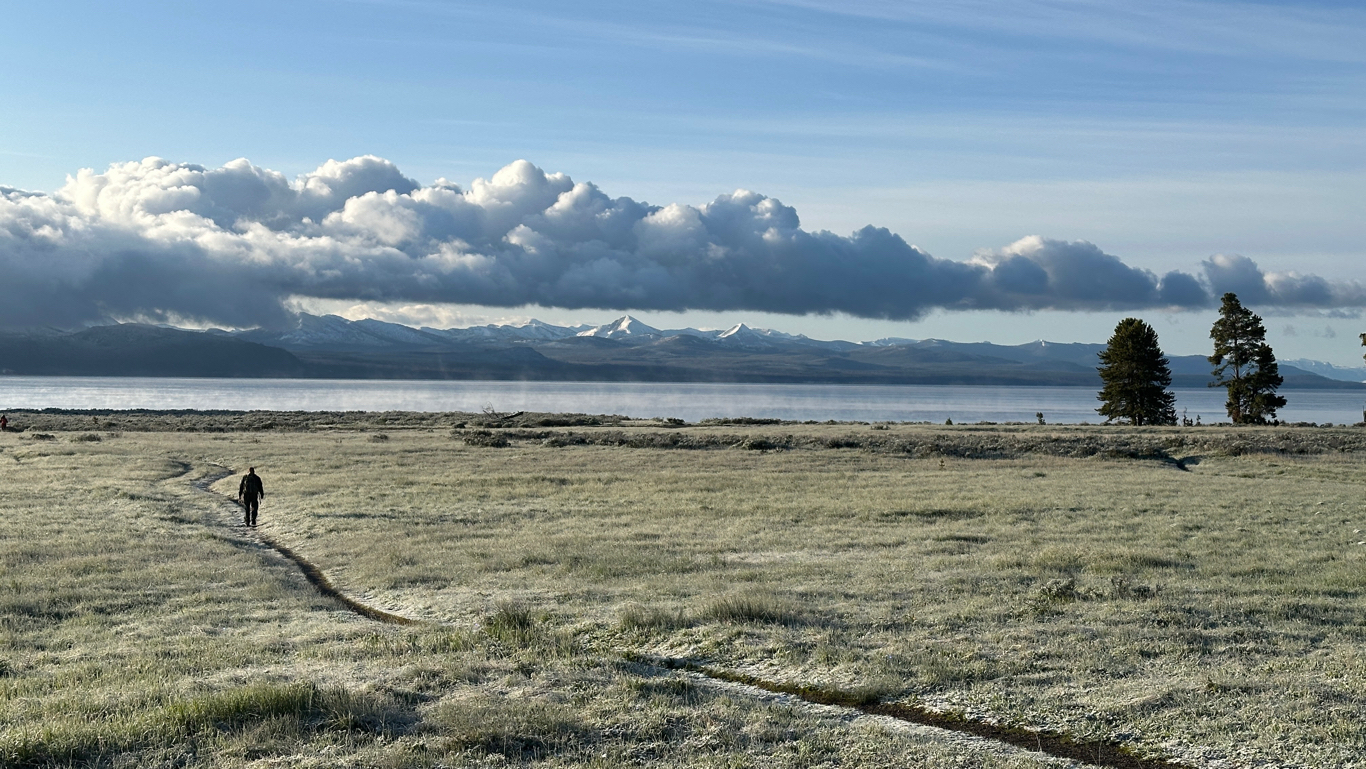
After breakfast we took some moments of solitude and reflection by Yellowstone Lake. As white pelicans paraded across the water and waves splashed onshore, we sketched, journaled, mapped sounds, and took in the majestic setting. We also had the chance to observe Yellowstone sand verbena, a rare endemic flower clinging to existence on the black sands of the lakeshore. We must give thanks to the parks botanist working to restore its presence while protecting it because it has a will to thrive.

As we grew a fondness and appreciation for the beauty of Yellowstone Lake we met Mike, an aquatic biologist who alone overseas the aquatic ecosystem in Yellowstone. He explained the importance of the ecosystem as headwaters to several large river systems, the Missouri and the Snake River. Aquatic Invasive Species have interrupted this fragile ecosystem. Lake trout have decimated the Yellowstone cutthroat trout population, a species that is important for aquatic and terrestrial ecosystems at the park. Mike also spends his summers preventing AIS such as zebra mussels from entering Yellowstone’s waters, a Herculean task as Wyoming is only one of five states without them. Afterwards we continued to enjoy this great ecosystem as we travelled to West Thumb, a geyser basin located on the Lake.
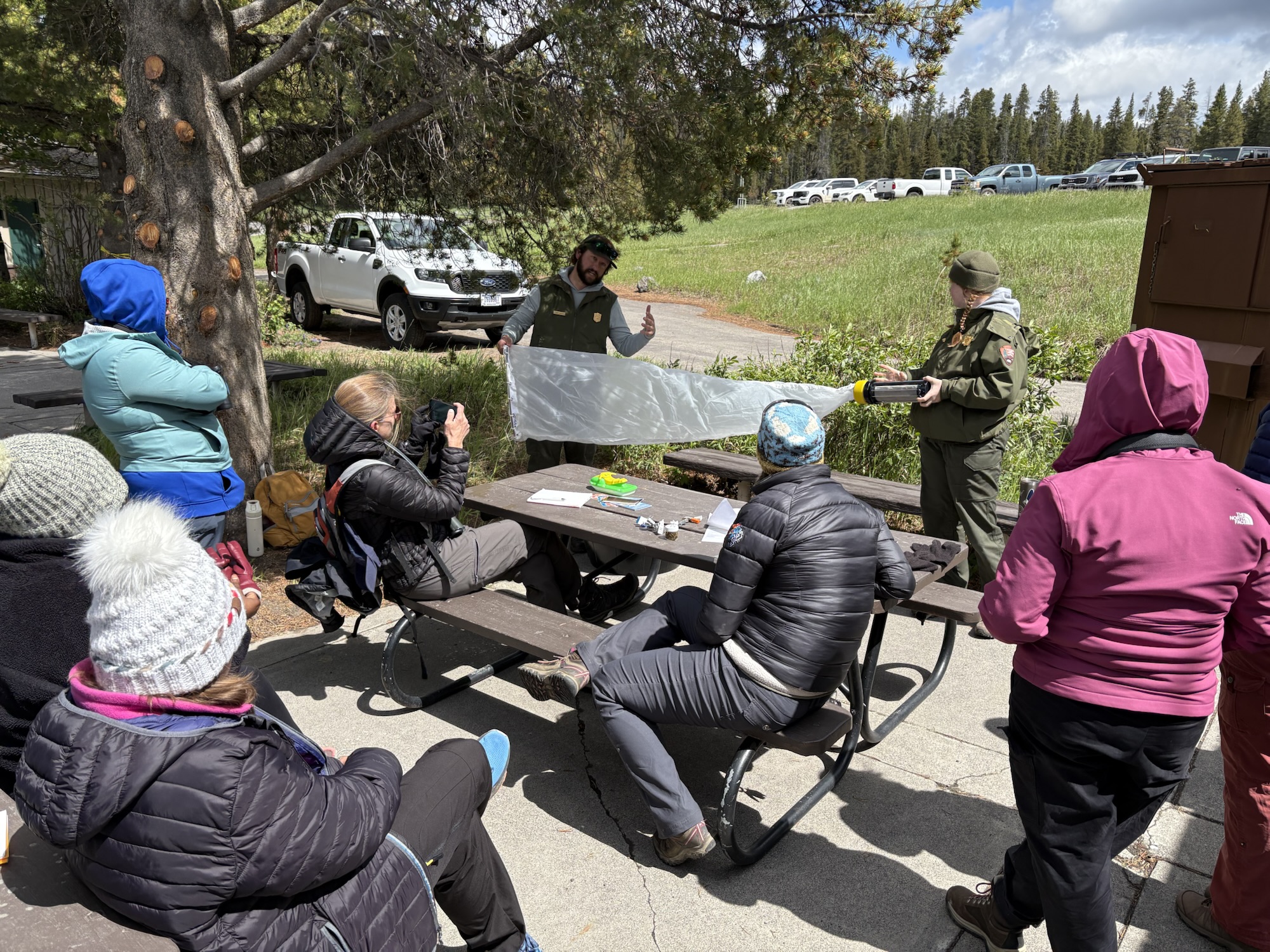
The hot springs stretched before us, quiet and majestic — a living canvas painted by the earth. As we descended the boardwalk, the waters near us swirled with muddy tones, but closer to their heart, they bloomed in brilliant shades of blue, as if holding the sky within. The air shimmered with heat, the springs pulsing with life between 120 and 173 degrees. Along their steaming runoff channels, we glimpsed tiny, resilient forms — microorganisms dancing in the flow, thriving where life seems impossible.
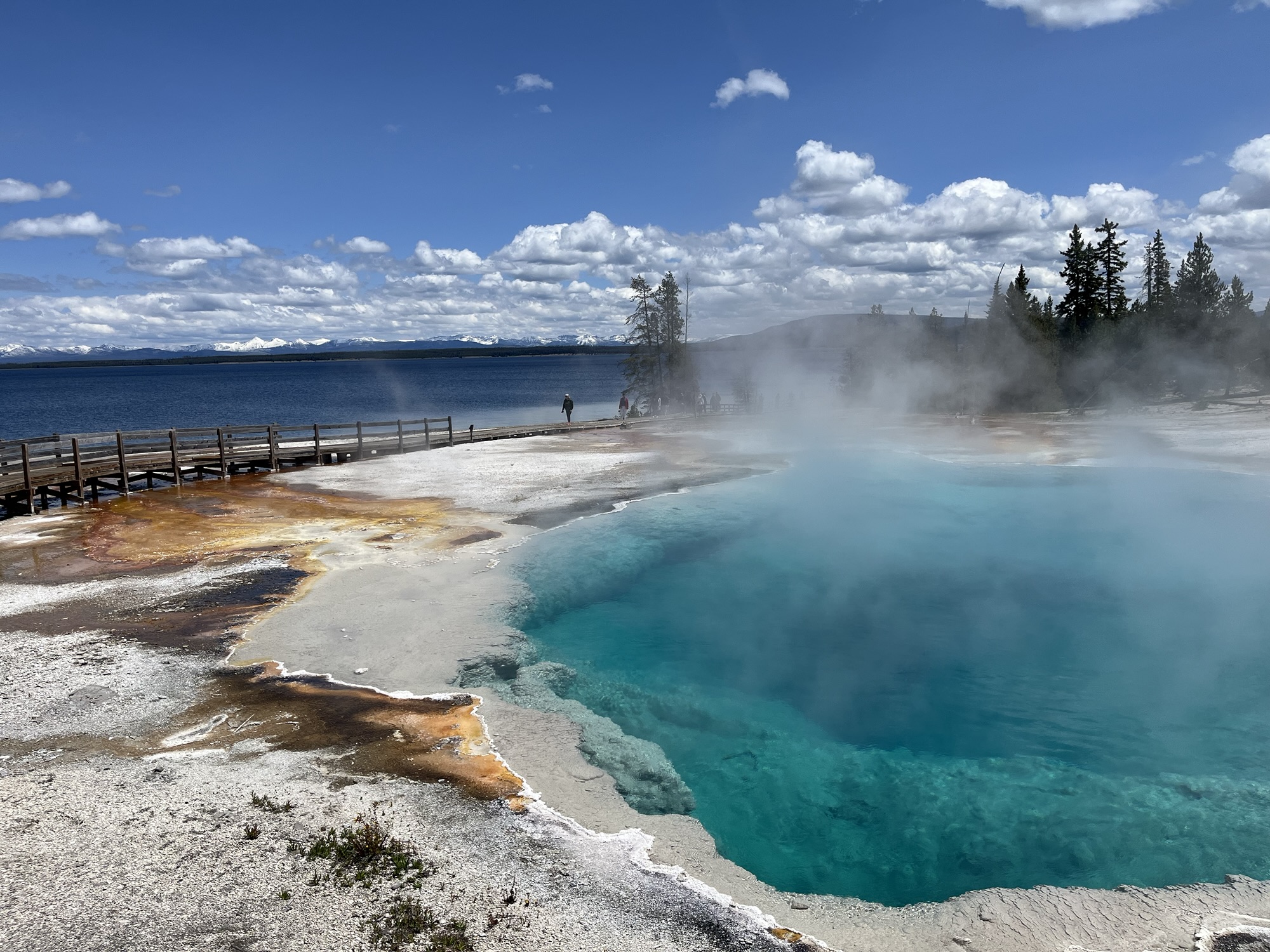
We went to the Black Sand Pool, also known as Thumper — a place where we all trusted the process. We lay down on the ground, thinking we might fall asleep, lulled by the stillness. But then, we felt a sudden burst of pressure, followed by a deep rumble beneath us. As soon as we heard Greg yell, “Get up!”, we saw it — the release of natural gas burst from the spring. Such a cool experience that everyone is grateful to participate in to be able to use all your senses.

To see the Grand Prismatic in the sunlight is astonishing. We can officially say that is better in person. But to see the bison carcass floating in the middle that had an unfortunate death let us know that even in nature accidents do occur. Each incline that we have encountered has been worth it.
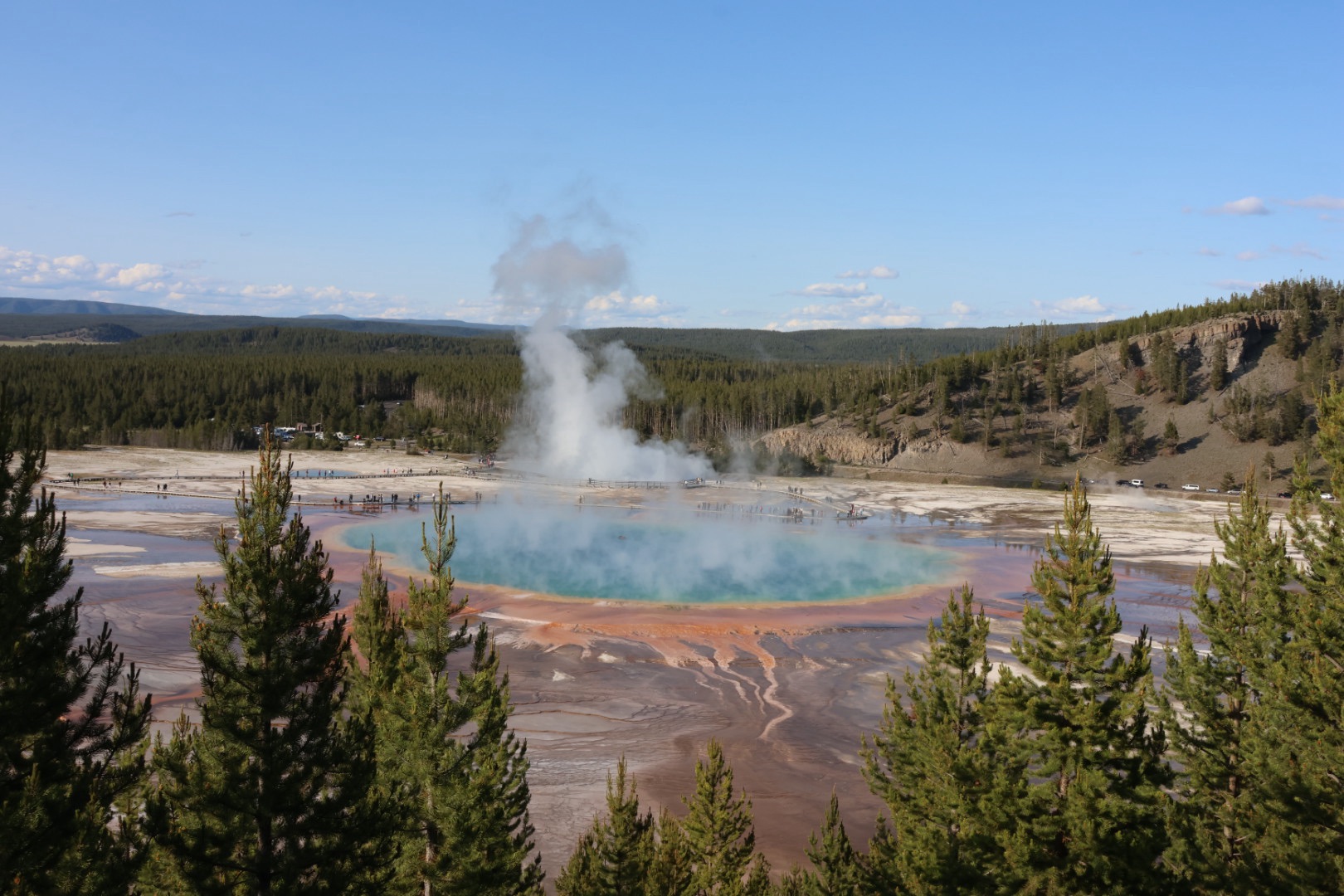
We ended the day with special reflection which tells a story of trials in tribulation. Melissa asked, “What has been the hardest part of the trip?” When each person spoke, we acknowledged that we could see some of ourselves within them. This trip isn’t just about wildlife, animals and science. It’s about how we can grow as inviduals. We are reminded it is important to step outside of your comfort zone. Always remember this may be hard; but remember it’s worth it.
